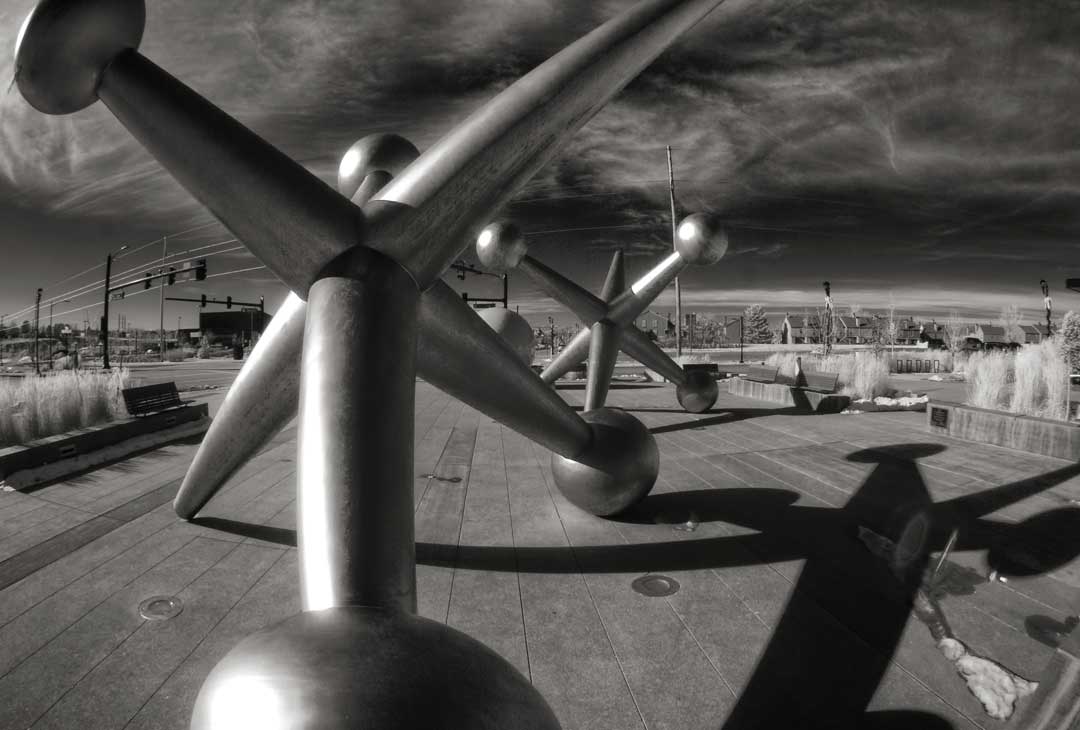Today’s Post by Joe Farace
“If you want to see a better world, change the lens through which you see it and do the work to make it better.” ― Jeffrey G. Duarte
I recently traded lenses with an old friend. I traded him an L-mount lens I only used once for a Lumix G Fisheye 8mm f/3.5 lens for the Micro Four-thirds system and think it was a win-win for both us.
Fisheye?, I can hear some of you asking now, “You probably won’t use that lens much either!” But I don’t agree. First of all, I love shooting with wide-angle lenses. One of the first lenses that I bought back in the day when I got my brand-new Nikon F2 was a Sigma 16mm f/2.8.
Because of its modest maximum aperture, the Lumix G Fisheye 8mm f/3.5 is a small lens weighing just 5.82 oz. The optical design features one extra-low dispersion element to maintain clarity and color accuracy. Individual elements are multi-coated and it has a built-in (albeit small) lens hood to minimize lens flare and ghosting for increased contrast. The lens has a stepping AF motor and internal focuses for quick, quiet, and smooth focusing for video and photo.
A fisheye lens is an ultra wide-angle lens that achieves extremely wide field-of-view by forgoing producing images that have straight lines of perspective (aka rectilinear), opting for an equisolid angle that gives images a characteristic convex non-rectilinear appearance. The angle-of-view of a fisheye lens is usually between 100 and 180 degrees, with (full-frame) focal lengths ranging from 8-10mm for circular images, and 15–16mm for more rectilinear images. The Lumix G Fisheye 8mm f/3.5 lens has a 180 degree angle-of-view.

One of the first things I did with the Lumix 8mm f/3.5 the lens was mount it on a Panasonic Lumix G6 that I had converted for infrared capture by Life Pixel using their Enhanced Infrared (equivalent to 665nm) filter. Next I headed to Discovery Park in Parker, Colorado to photograph the eponymous Jacks and Ball (again.) It was not quite Noon—maximum infrared capture time—so flare, not unexpectedly, popped into a number of my frames including the one above, even with the built-in lens hood. When shooting Infrared, flare can be a problem with all wide angle lenses so I was not surprised. I was also hoping to get to McCabe Meadows but the recent cold weather caused me to wimp out. While the Wood Effect isn’t prominent this time of the year with the leaves off the tree, That’s still on my agenda for this lens, so look for an Instagram or Twitter post with one of those IR images.
How I Made this Shot: There is some obvious distortion on this shot, which might offend some purists but I though it would be fun, which, if you remember is the motto of this blog. Exposure with a Panasonic Lumix G6 was 1/160 sec at f/16 and ISO 400. The camera was converted to infrared capture by LifePixel using their Enhanced Infrared (665nm) filter. The RAW file was opened in Photoshop CS6 and converted to monochrome using Silver Efex Pro with a dash of Glamour Glow from Color Efex Pro tossed in for good measure.
 I’ve found that Life Pixel does a great job with IR conversions and they have done most of my Canon DSLRs and all of my Panasonic Lumix G-series mirrorless cameras. This is not a paid or sponsored endorsement, just my experience.
I’ve found that Life Pixel does a great job with IR conversions and they have done most of my Canon DSLRs and all of my Panasonic Lumix G-series mirrorless cameras. This is not a paid or sponsored endorsement, just my experience.
My book, The Complete Guide to Digital Infrared Photography is available from Amazon for $41.99 but used copies starting around nineteen bucks as I write this. Creative Digital Monochrome Effects has a chapter on IR photography and is available from Amazon for $14 with used copies start ingaround two bucks, less than your next cup of joe at Starbucks.